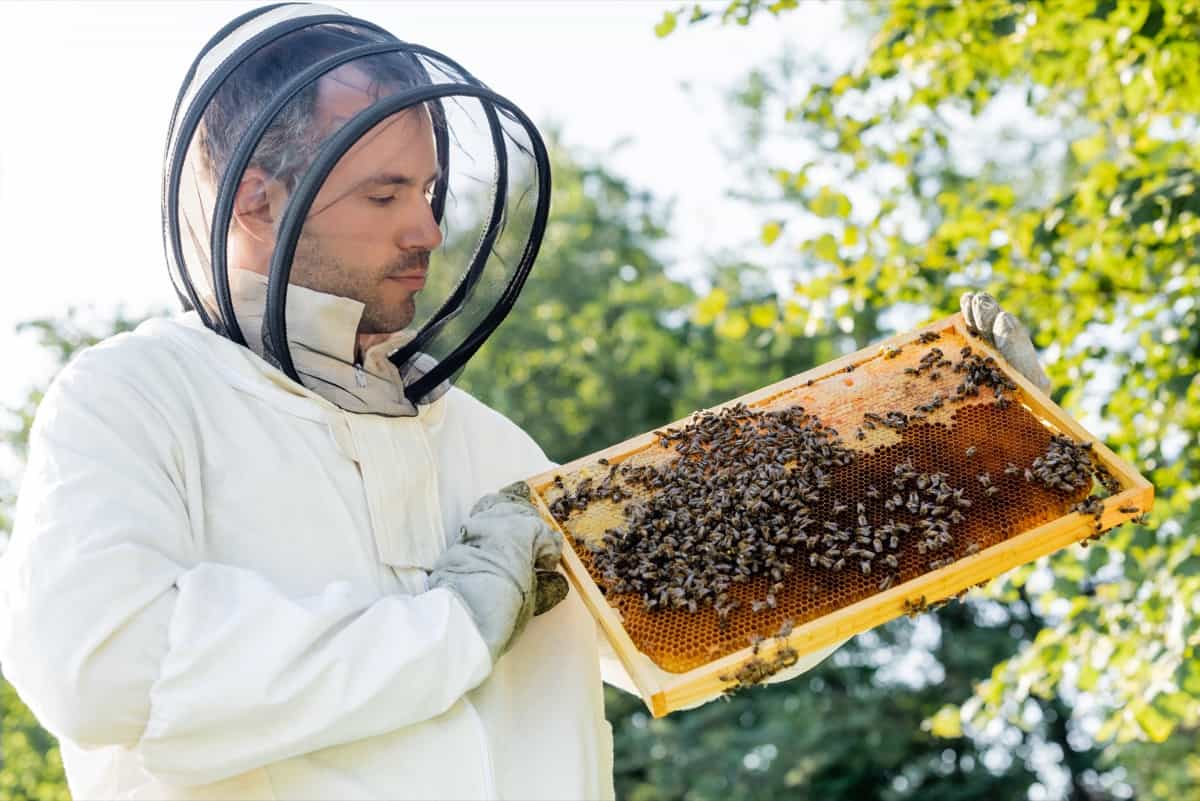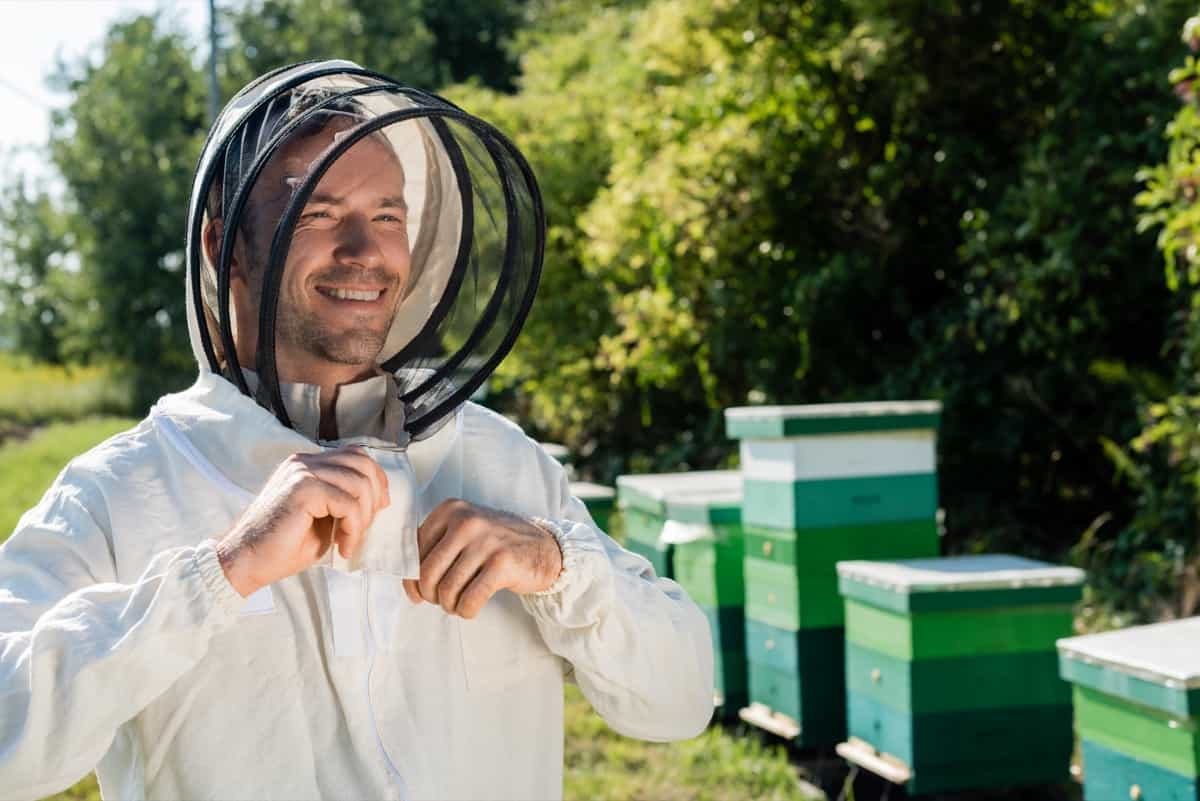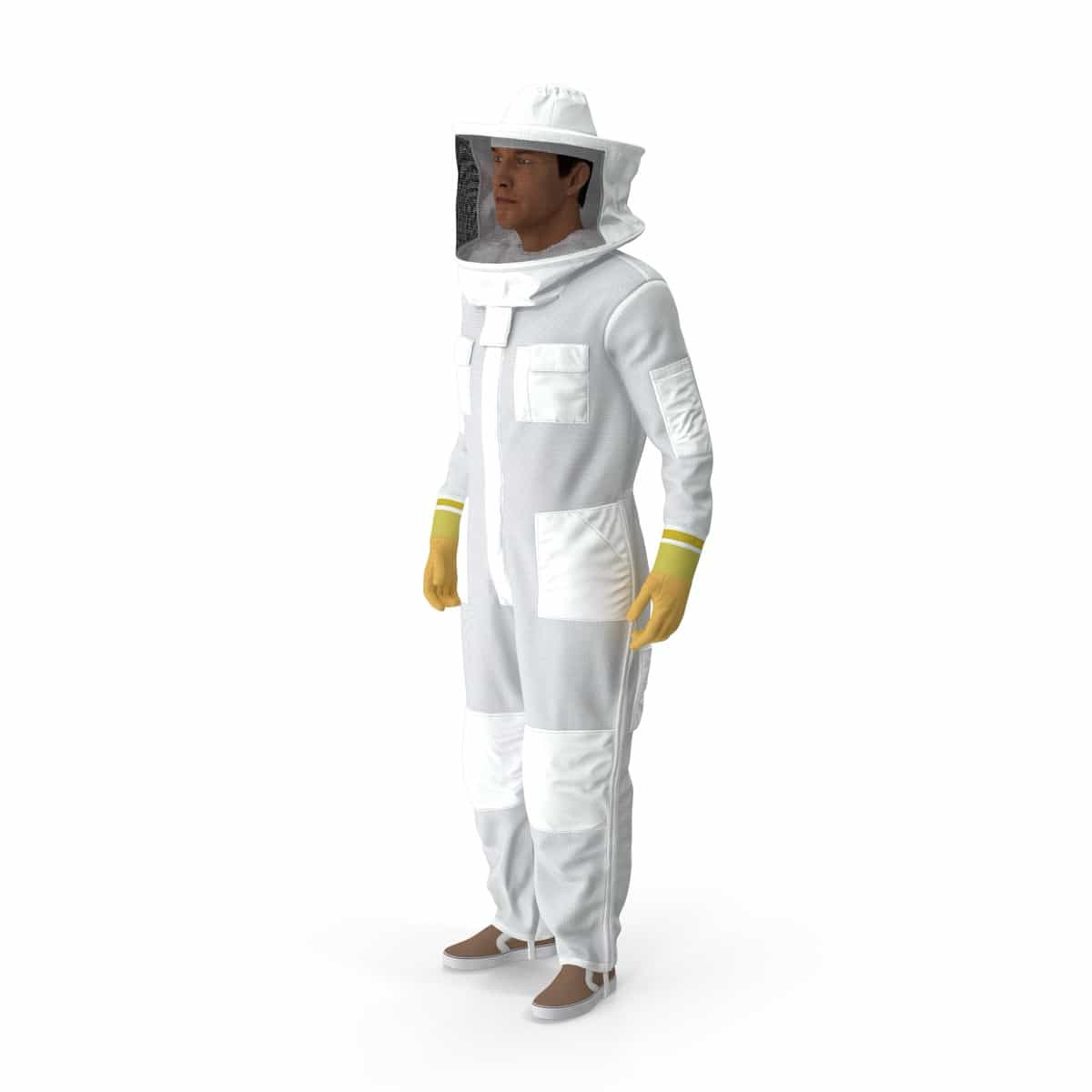Beekeeping suits and protective gear are essential for beekeepers to safeguard themselves from bee stings and other potential hazards while working with bees. Choosing the right fit and type of beekeeping suit is crucial for safety and comfort. This guide will discuss choosing the right fit for your beekeeping suits and gear.

Beekeeping Suits and Protective Gear
Understanding the Importance of Beekeeping Suits and Protective Gear
Beekeeping involves handling bees, which can become defensive and aggressive if they feel threatened. Beekeeping suits and protective gear serve several crucial purposes,
- Protection from Stings: The primary purpose of beekeeping suits is to provide a physical barrier that prevents bee stings. Bee stings can cause allergic reactions and discomfort.
- Safety: Beekeeping suits protect beekeepers from bee attacks, reducing the risk of stings on the face, body, and limbs.
- Comfort: Well-fitted beekeeping gear ensures comfort, allowing beekeepers to focus on tasks without distractions.
- Maintaining Bee Health: Proper gear helps prevent beekeepers from inadvertently harming their bees during inspections or hive maintenance.
Factors to Consider When Choosing Beekeeping Suits and Protective Gear
- Type of Bees: Different bee species may have varying temperaments and stinging tendencies. Consider the behavior of your bees when choosing the level of protection needed.
- Climate: The local climate can impact your choice of gear. In hot weather, ventilation is crucial to prevent overheating, while colder climates may require layered suits.
- Allergies: If you have known allergies to bee stings, opt for high-quality, fully enclosed suits with added protection around the face and neck.
- Budget: Beekeeping gear comes in various price ranges. While staying within your budget is essential, prioritize quality and safety over cost.
- Durability: Durable materials, such as heavy-duty cotton or synthetic blends, are preferred for longevity.
In case you missed it: Beekeeping: Understanding the Basics of Apiculture

Different Types of Beekeeping Suits and Their Features
Full Body Suits: These one-piece suits cover the entire body and are often made of thick, breathable fabric like cotton or synthetic blends. They feature zippered closures, elastic cuffs, and a veil attached to a helmet or hat, offering complete protection from bee stings.
Jacket and Veil: These provide upper body protection and are worn with regular pants. They are lightweight and ideal for warm weather but may expose the lower body.
Ventilated Suits: These suits have built-in mesh panels for increased airflow, keeping beekeepers cool in hot conditions while offering full-body protection.
Ultra-Protective Suits: Designed for more aggressive bee colonies, these suits have multiple layers and extra-thick fabric to withstand stings.
The Role of Protective Gear in Ensuring Beekeeper Safety
Choosing the right beekeeping suit depends on the climate, bee behavior, and personal comfort, ensuring beekeeper safety while enjoying this fascinating hobby. Protective gear is pivotal in safeguarding beekeepers from stings and potential allergenic reactions. Bees can become defensive during hive inspections, making protective gear indispensable.
Wearing a beekeeping suit with a veil, gloves, and boots creates a physical barrier between the beekeeper and the bees. The suit’s thick fabric prevents stings, and the veil ensures that bees cannot access the head and face, which are sensitive areas. Gloves protect the hands, and boots shield the feet. Without these protective layers, beekeepers risk painful and potentially dangerous stings.
Moreover, beekeeping suits help prevent allergic reactions, which can be life-threatening for those with bee allergies. Beekeeping is a rewarding and enjoyable experience, but safety should always be a top priority. The right protective gear ensures beekeepers can confidently tend to their hives without unnecessary health risks.
How to Select the Right Size for Beekeeping Suits and Protective Gear
- Measure Yourself: Take accurate measurements of your chest, waist, hips, and inseam for full-body suits or jackets. Measure your head circumference for veil helmets and your hand size for gloves.
- Refer to Sizing Charts: Consult the manufacturer’s sizing chart and compare your measurements to their recommended sizes.
- Consider Layering: If you plan to wear clothing underneath, allow for extra room. Ensure the suit or jacket is loose enough for comfortable movement.
- Check for Adjustability: Look for suits with adjustable cuffs, waistbands, and elastic bands for a snug fit.:
- Test Mobility: Try on the gear to ensure it allows easy movement while maintaining a secure fit.
- Seek Professional Guidance: Visit a beekeeping supply store for expert advice on sizing and fit.
In case you missed it: How Much Money Do Beekeepers Make: A Comprehensive Analysis of Beekeeping Profits

Evaluating the Quality and Durability of Beekeeping Suits
- Material: Opt for suits made from sturdy, breathable materials like cotton or synthetic blends. Ensure seams are well-stitched and reinforced.
- Veil: Examine the veil for durable mesh that offers good visibility. It should be securely attached to the suit or helmet.
- Zippers and Closures: Check that zippers are sturdy and closures are reliable for easy wear and removal.
- Ventilation: Look for suits with proper ventilation to prevent overheating during hot weather.
- Reviews: Read product reviews and seek recommendations from experienced beekeepers.
- Brand Reputation: Choose reputable brands known for quality beekeeping gear.
Comparing Different Brands of Beekeeping Suits and Protective Gear
- Reputation: Research brands with a positive reputation for quality and reliability.
- Material: Evaluate the materials used in the gear, considering comfort and durability.
- Design: Compare features like ventilation, pockets, and ease of wear.
- Price: Balance your budget with the gear’s quality and features.
- Sizing Options: Ensure the brand offers a range of sizes to find the best fit.
- Customer Reviews: Read reviews from other beekeepers to gauge user satisfaction.
- Warranty: Check if the brand offers warranties or guarantees on their products.
Ultimately, the choice depends on your requirements, budget, and preferences. Prioritize safety and comfort when selecting different beekeeping suits and protective gear brands.
Tips for Maintaining and Cleaning Beekeeping Suits and Protective Gear
- Regularly inspect for wear, tears, or loose seams.
- Clean after each use to remove bee pheromones and residues.
- Hand wash in cold water with mild detergent, avoiding harsh chemicals.
- Rinse thoroughly and hang to air dry to prevent fabric damage.
- Store gear in a cool and dry place, away from sunlight and pests.
- Replace worn-out parts or gear as needed to maintain safety.
Ensuring Comfort and Mobility in Beekeeping Suits and Protective Gear
- Choose the right size to prevent restriction of movement.
- Opt for suits with elasticized cuffs and waistbands for flexibility.
- Ensure the suit isn’t too tight, especially in critical areas like the crotch and armpits.
- Select lightweight and breathable materials for comfort during long beekeeping sessions.
- Use gloves that provide dexterity while maintaining protection.
- Regularly practice moving in your gear to get accustomed to it before working with bees.
In case you missed it: How to Start Backyard Beekeeping in 10 Steps for Beginners

Understanding the Importance of Proper Ventilation in Beekeeping Suits
Proper ventilation is crucial in beekeeping suits to prevent overheating. Beekeepers often work in hot conditions, and excessive sweating can lead to discomfort and fogged veils. Ventilated suits incorporate breathable mesh panels in the back, underarms, and legs, allowing air circulation while maintaining bee sting protection. Adequate airflow helps regulate body temperature, reducing the risk of overheating and ensuring beekeepers can work comfortably and safely for extended periods. When choosing a beekeeping suit, consider the climate and environmental conditions to select one with the right level of ventilation for your needs.
Conclusion
Selecting the right beekeeping suit and protective gear is important for a safe and enjoyable experience. The choice of suit type, size, and quality can significantly impact comfort and safety during hive inspections. By making decisions wisely and investing in quality beekeeping attire, beekeepers can focus on their passion while minimizing the risks of bee stings and allergenic reactions.
- Feed Your Flock for Less: Top 10 Tips to Save on Chicken Feed
- Ultimate Guide to Ossabaw Island Hog: Breeding, Raising, Diet, and Care
- Hatching Answers: The Top 10 Reasons Your Chickens Aren’t Laying Eggs
- Eggs and Economics: Breaking Down the Cost of Raising Backyard Chickens
- Defend Your Greens: Proven Methods to Keep Iguanas Out of Your Garden
- Ultimate Guide to Cinnamon Queen Chicken: A Comprehensive Guide for Beginners
- Ultimate Guide to California Tan Chicken: Breeding, Raising, Diet, Egg-Production and Care
- Ultimate Guide to Marsh Daisy Chicken: Breeding, Raising, Diet, and Care
- 10 Types of Chicken Farming Businesses You Can Start for Profits